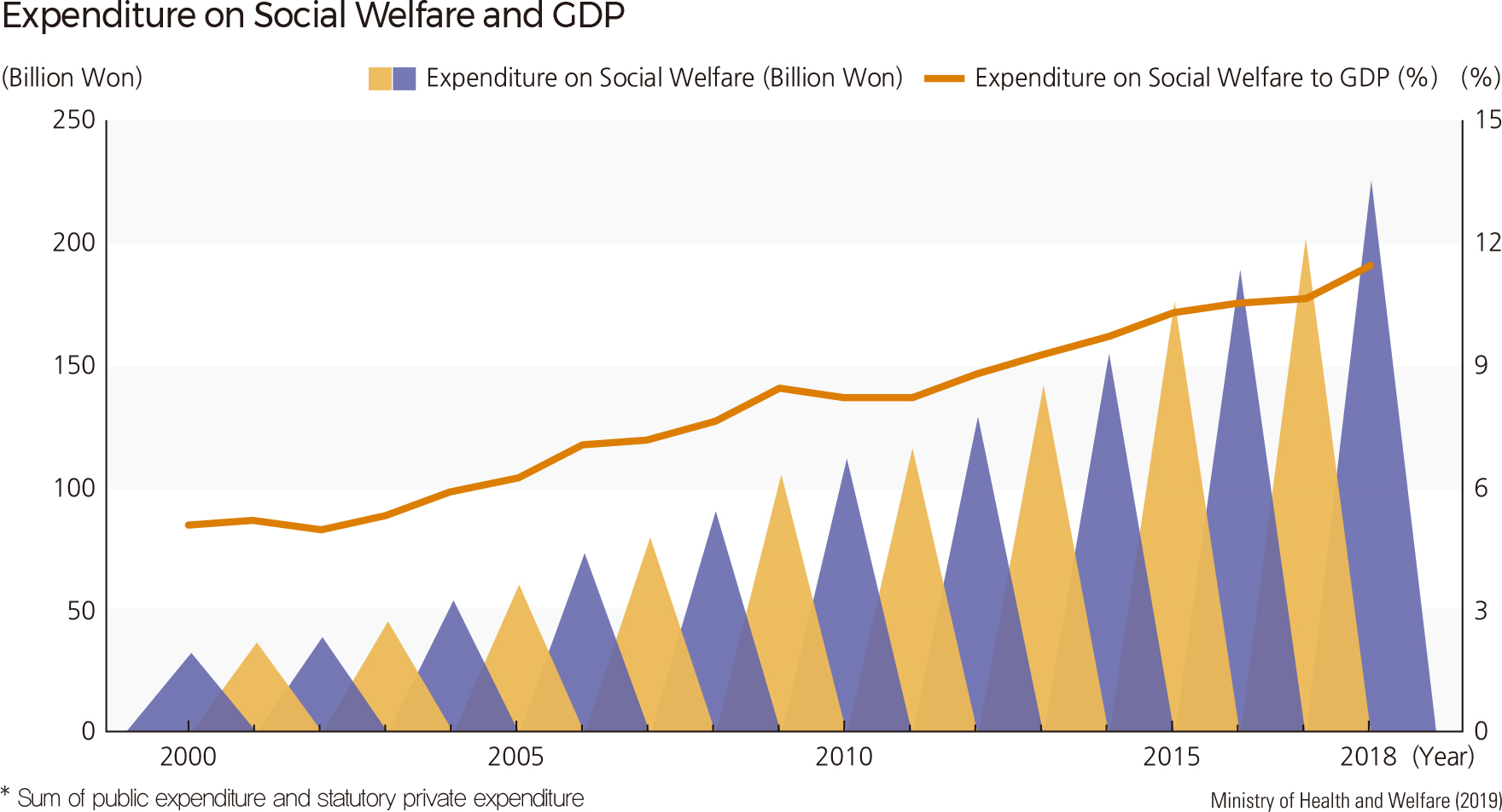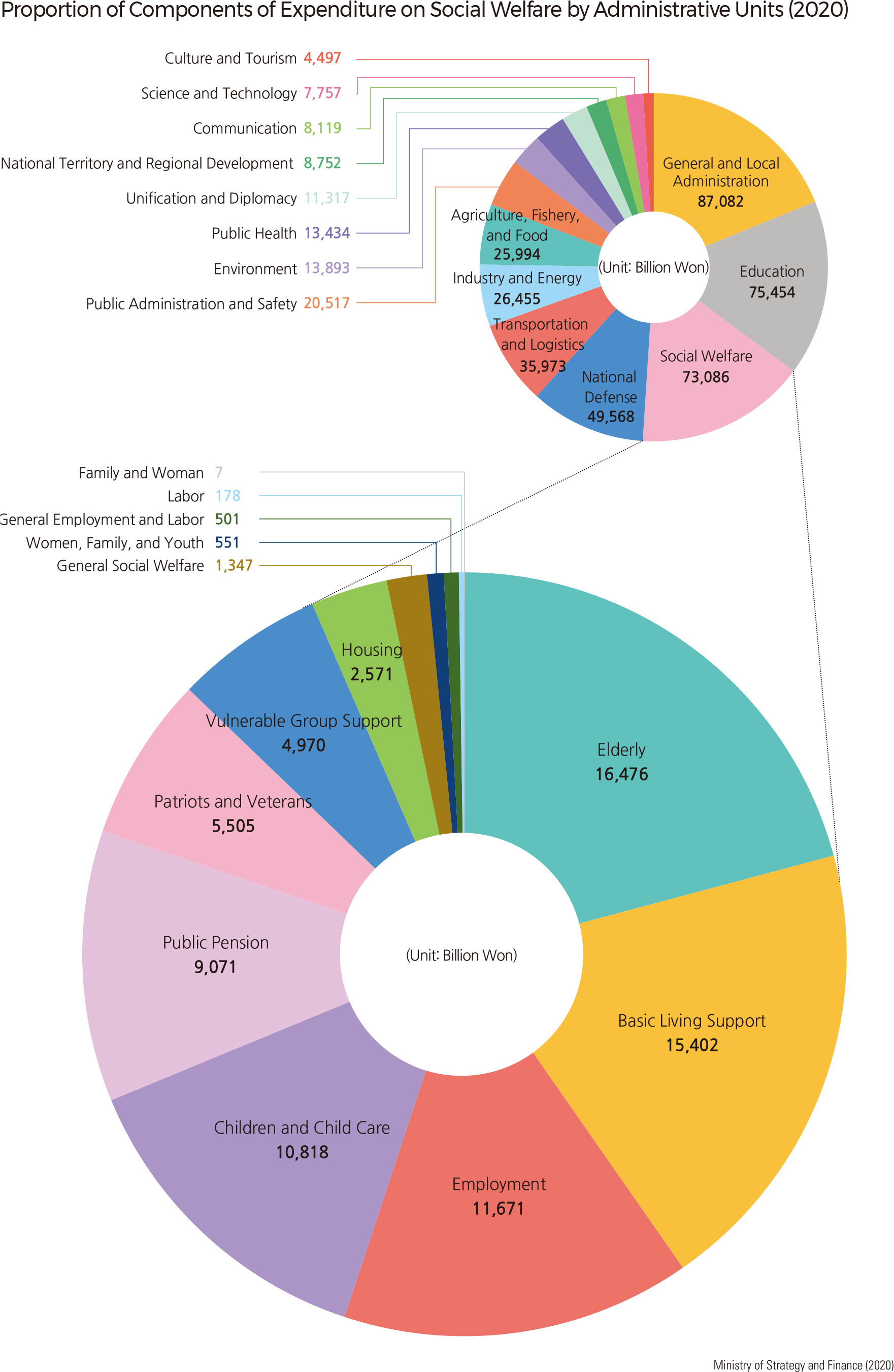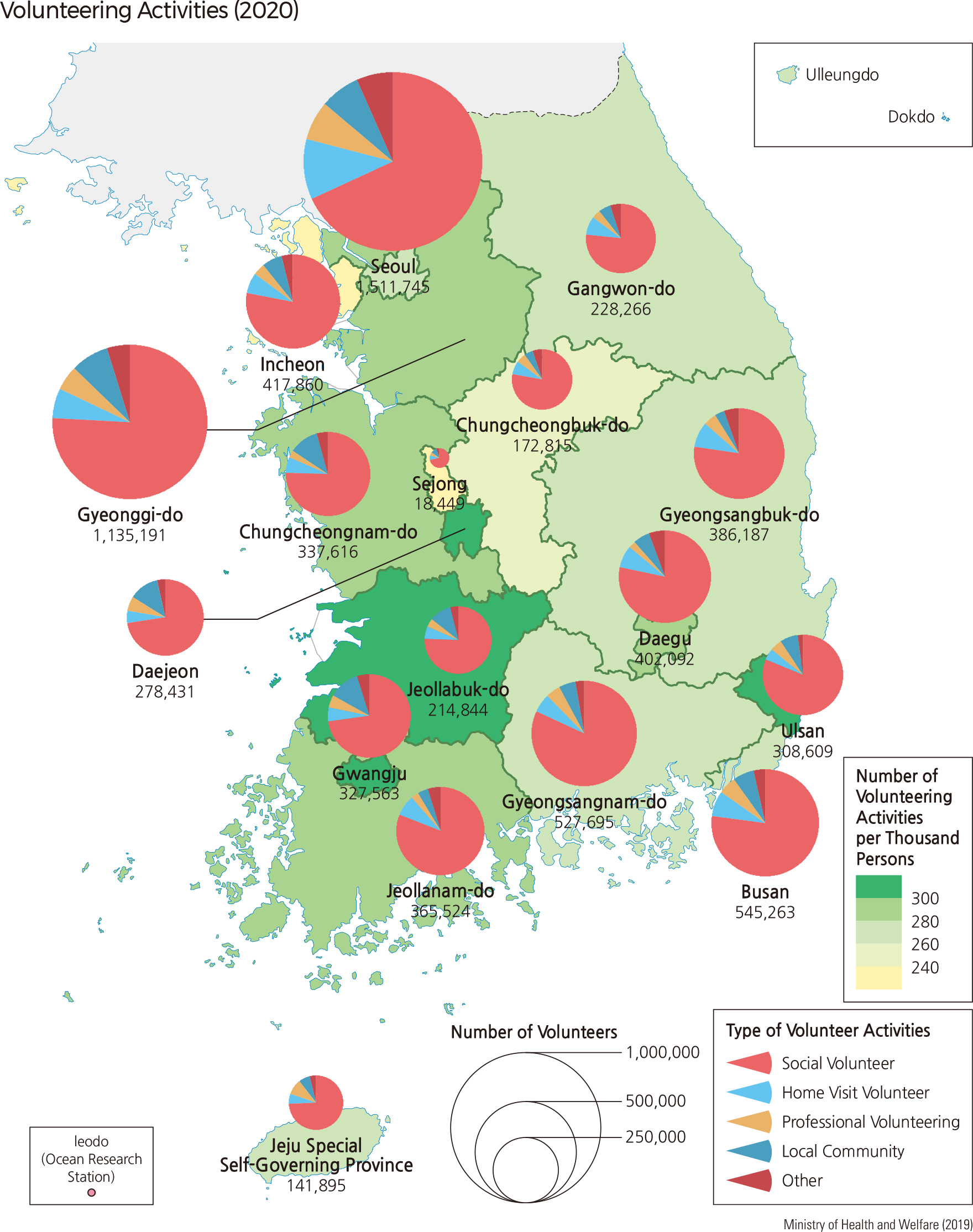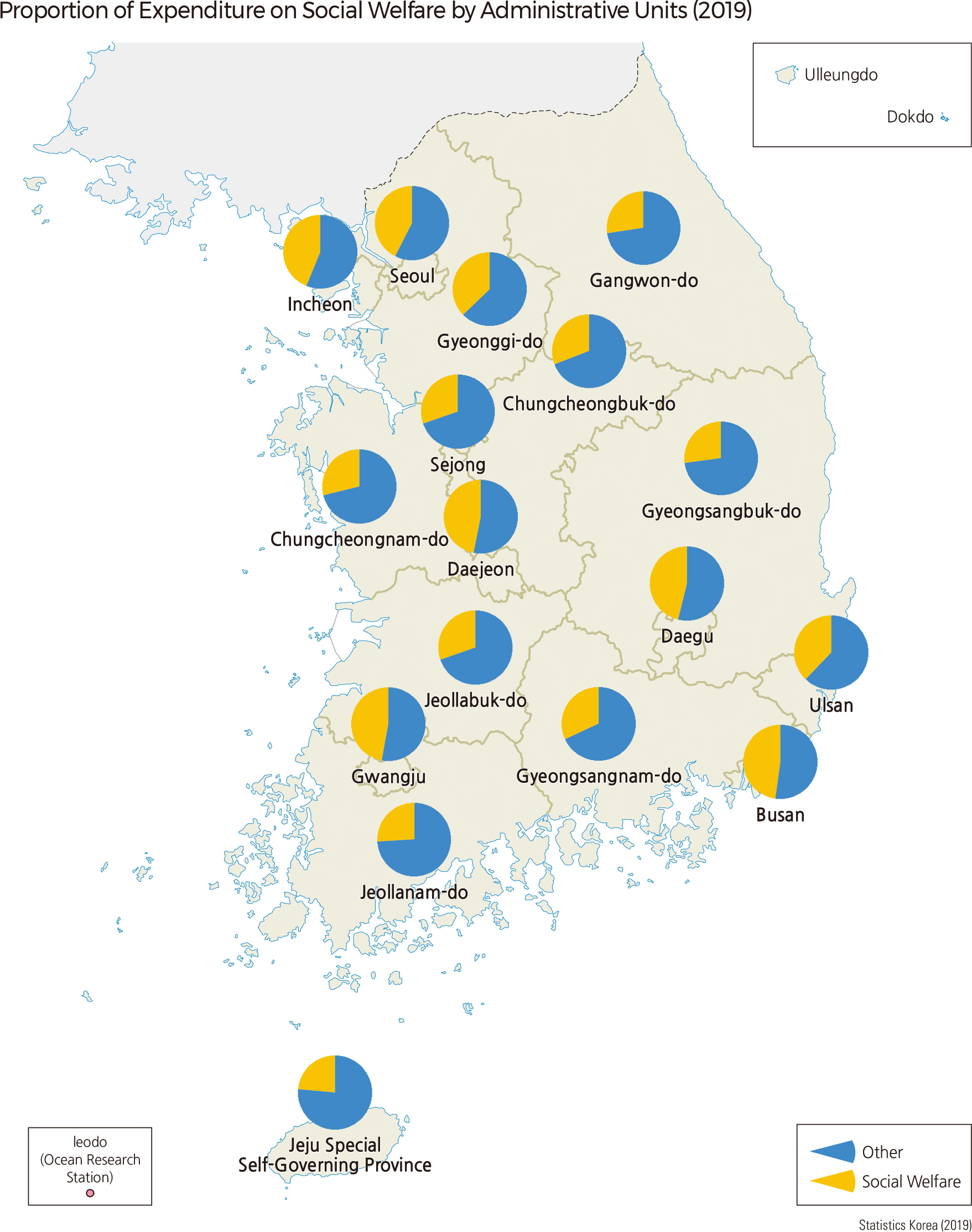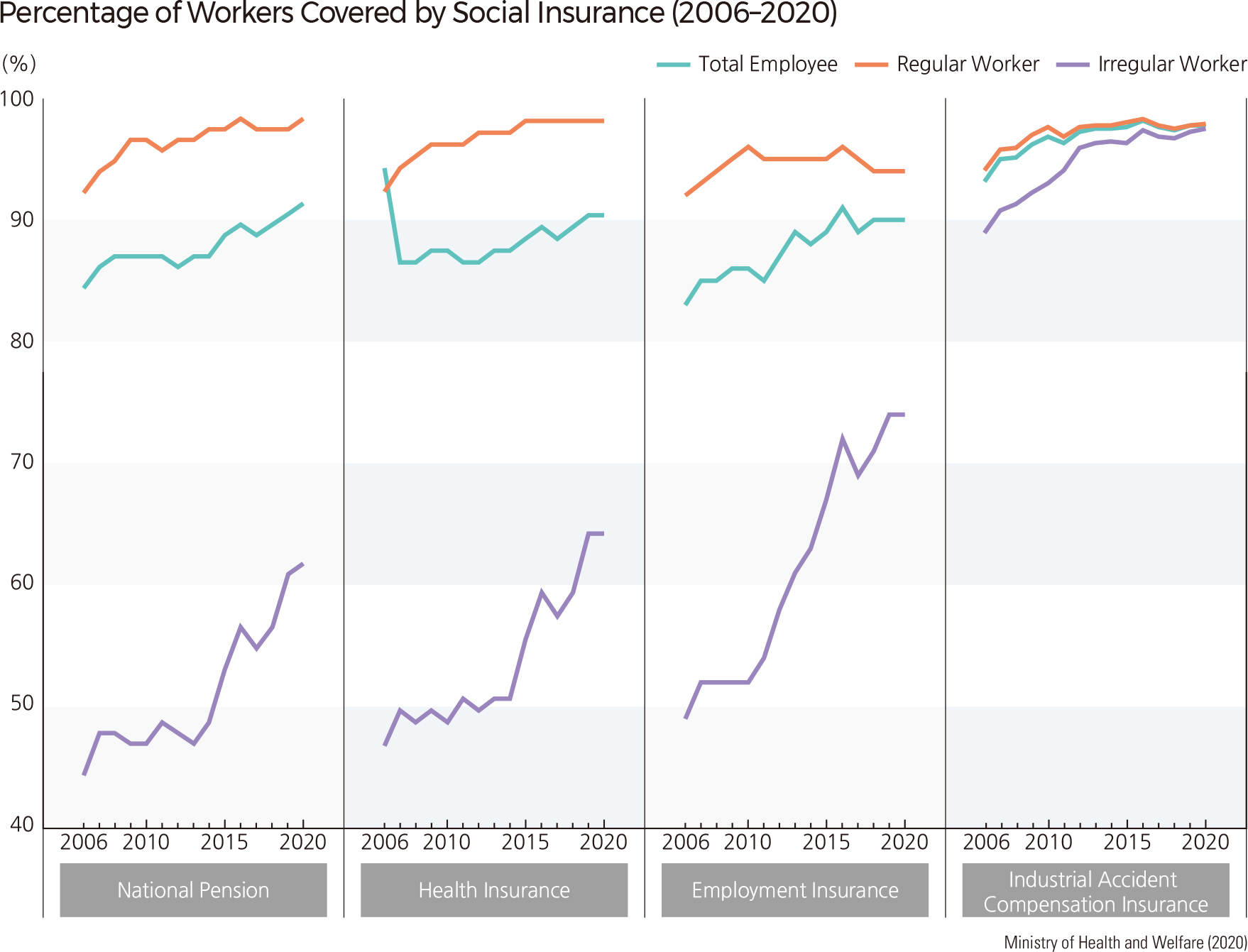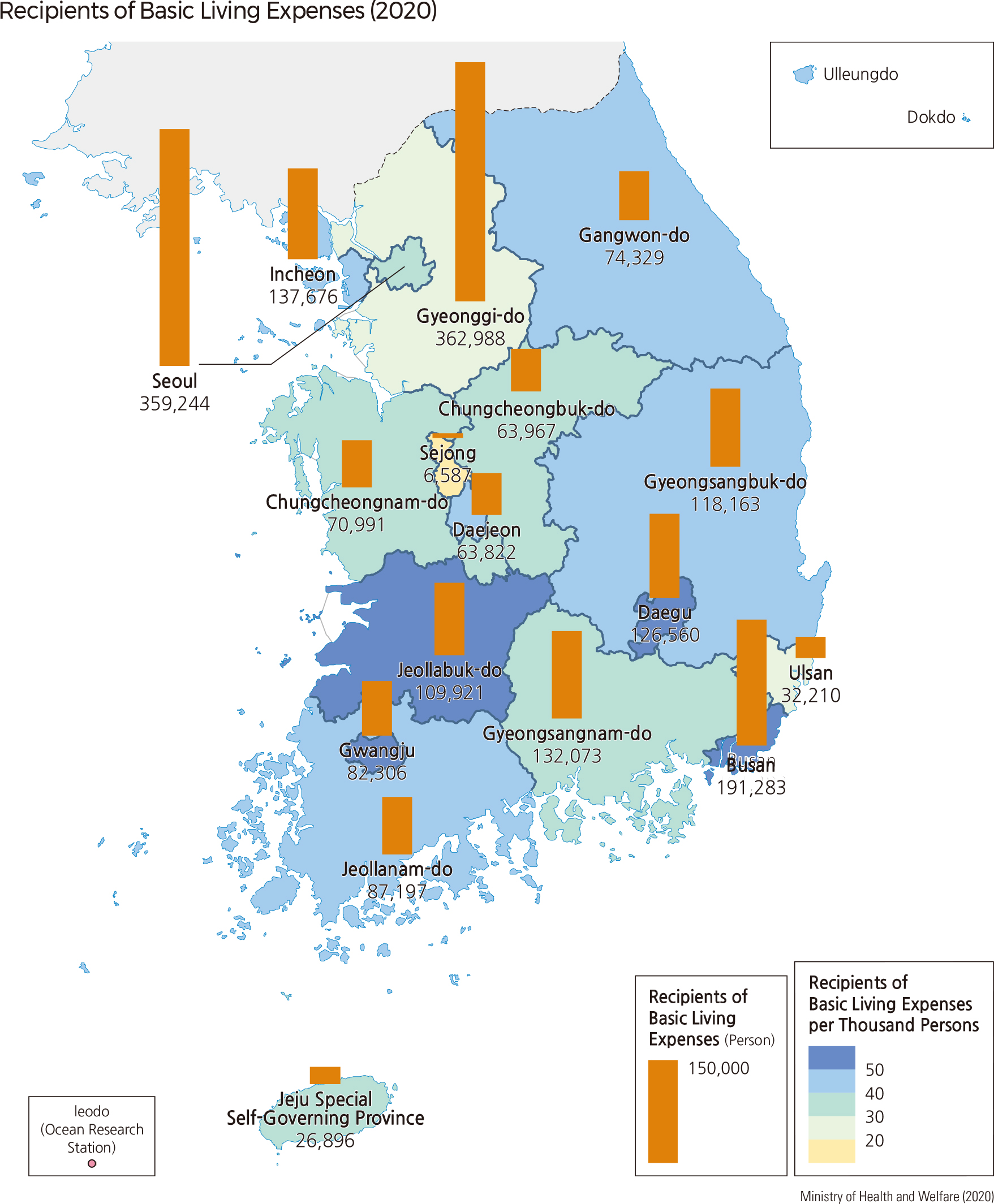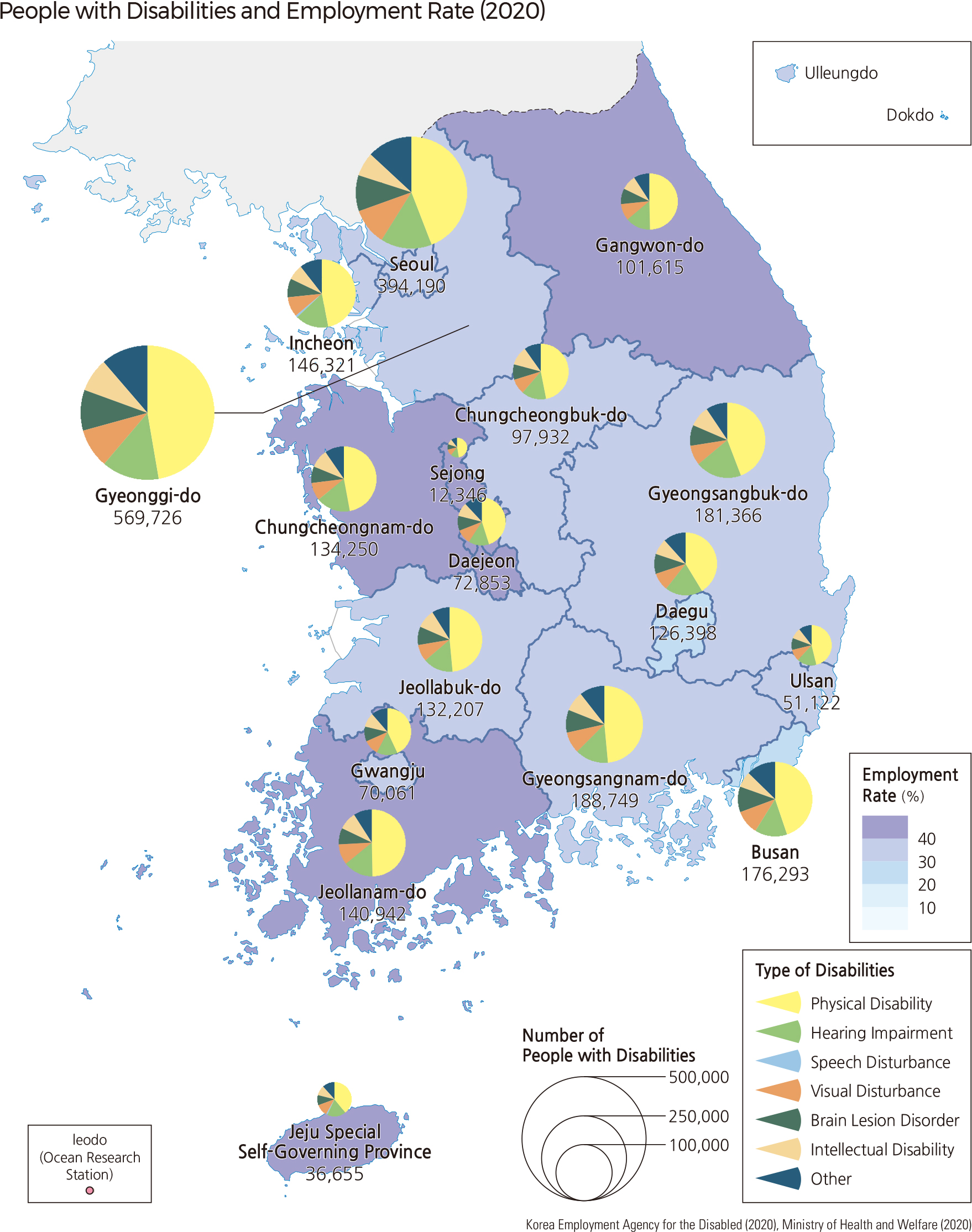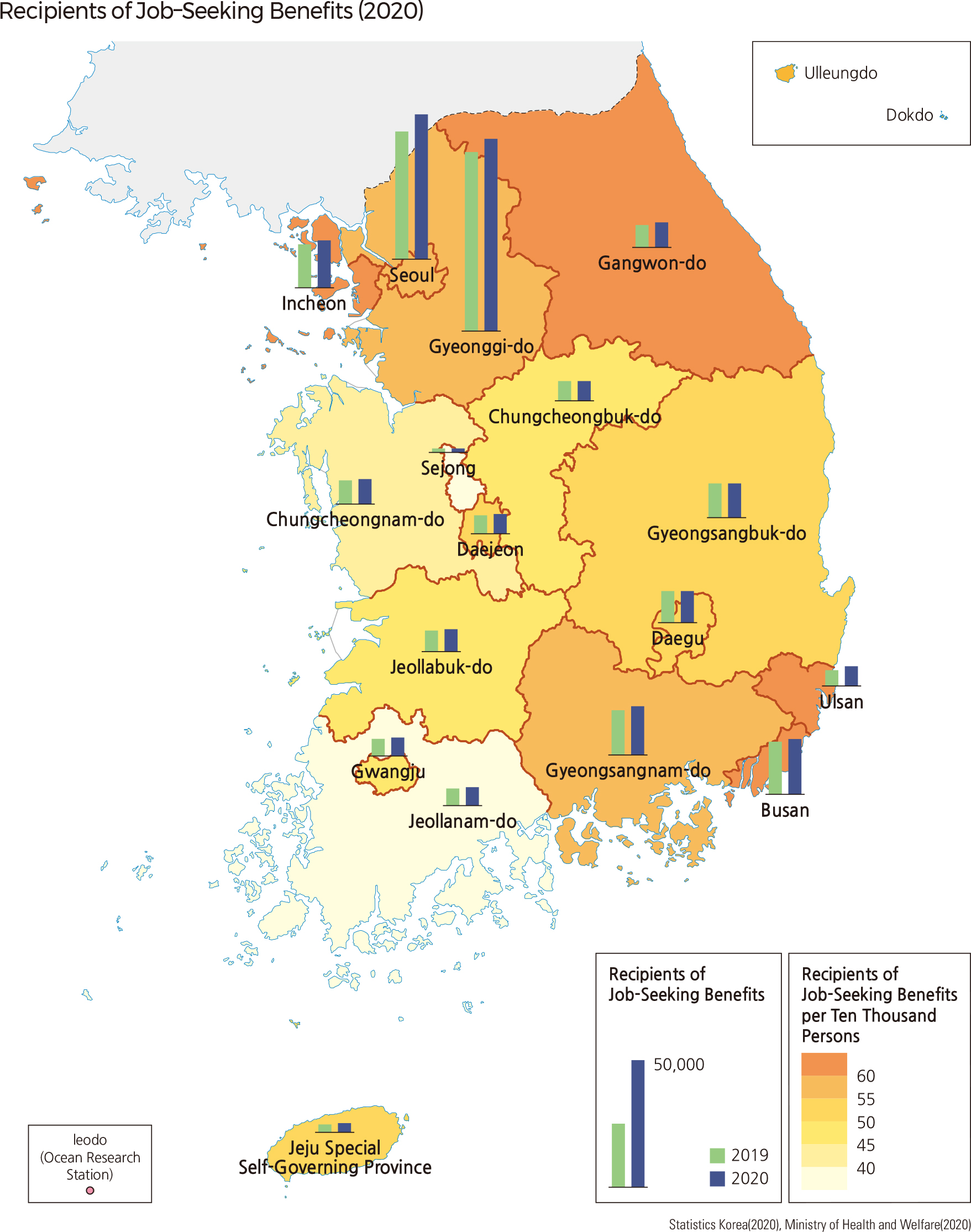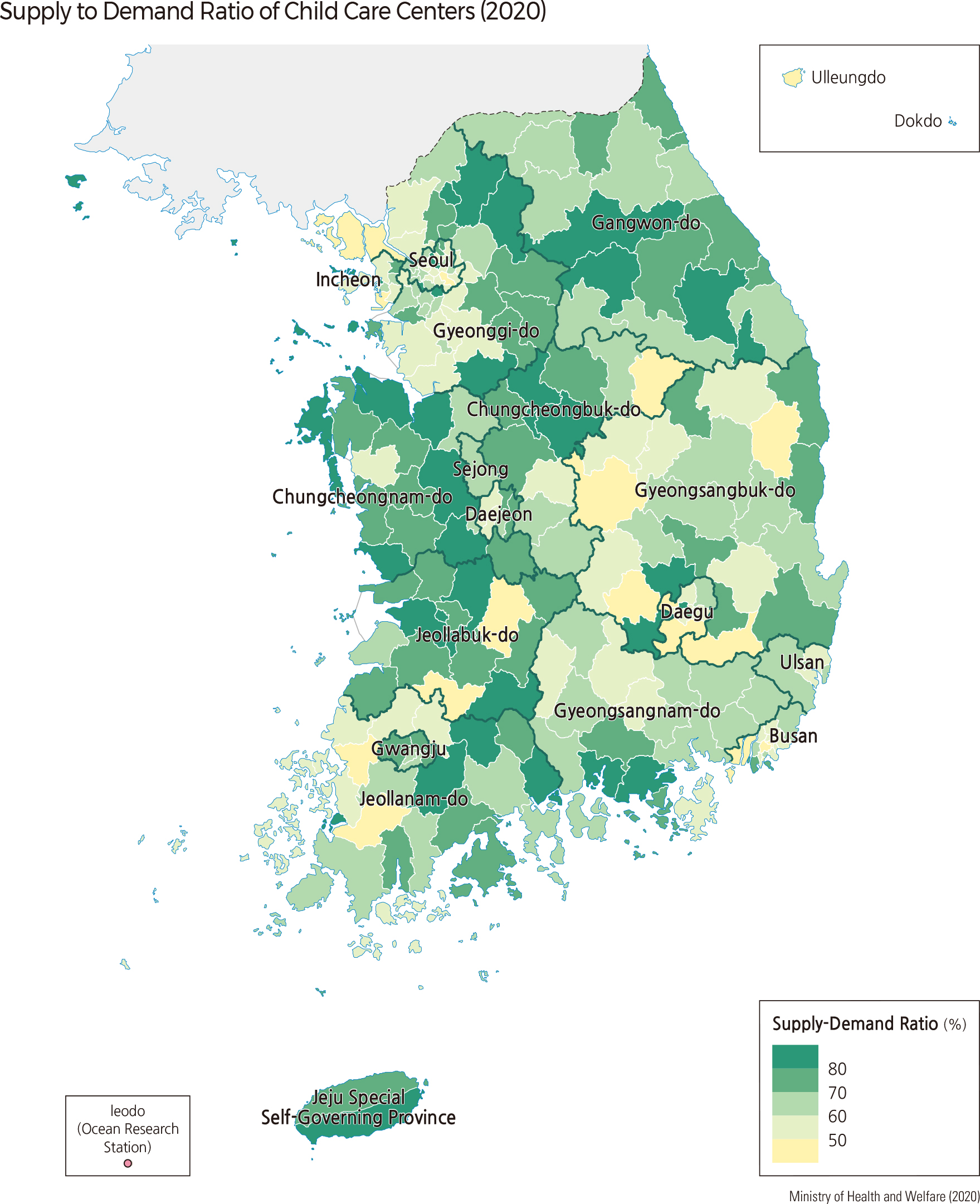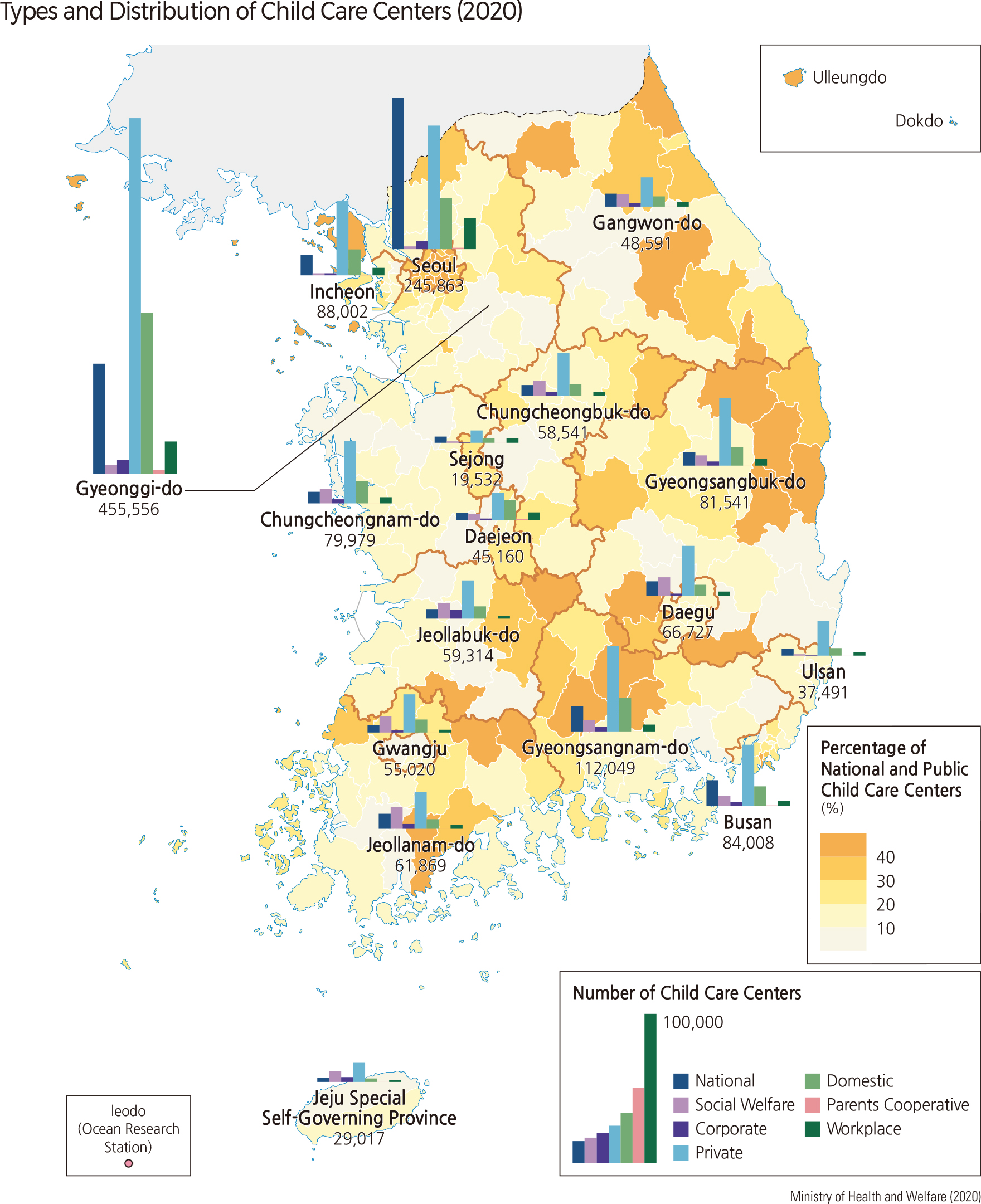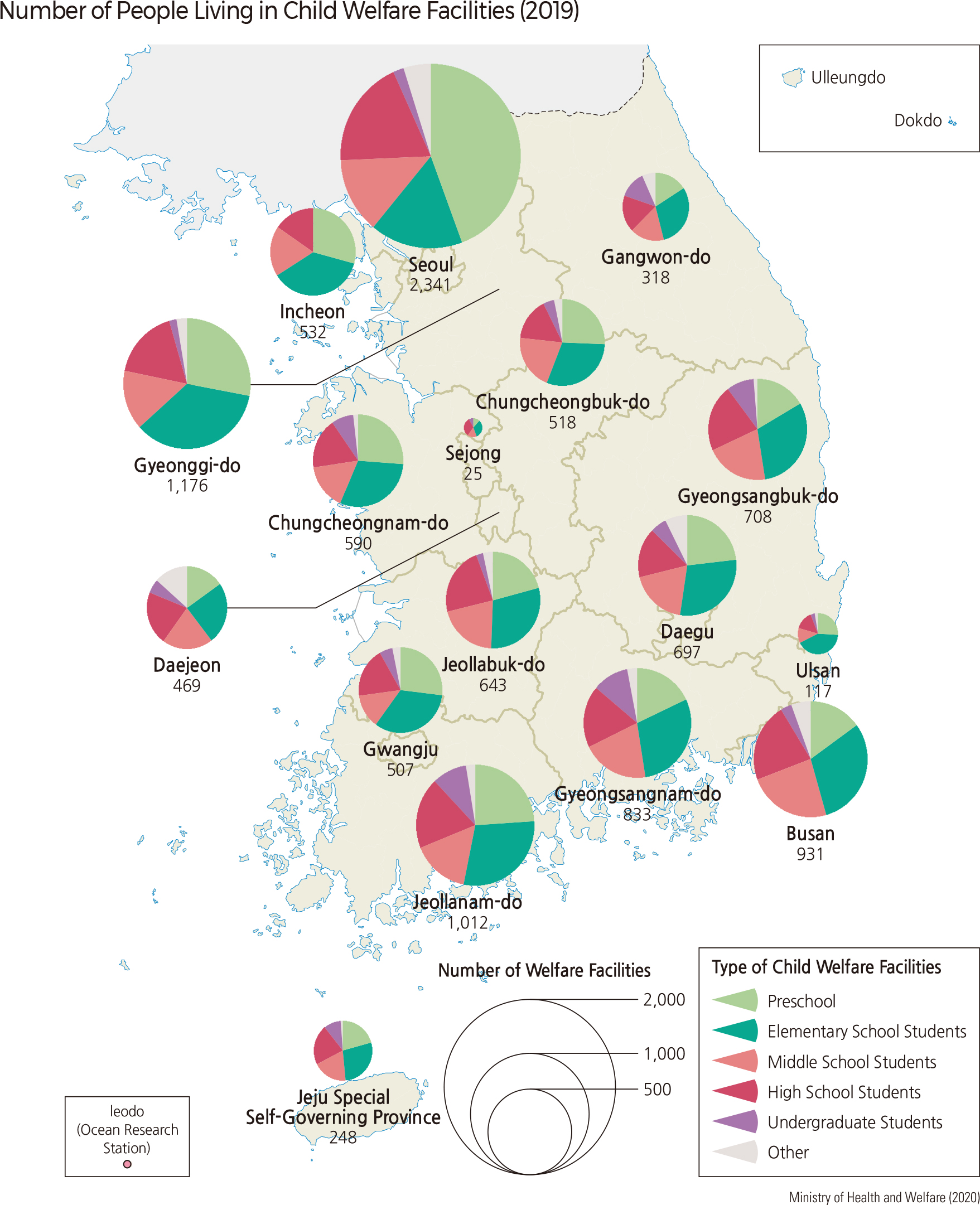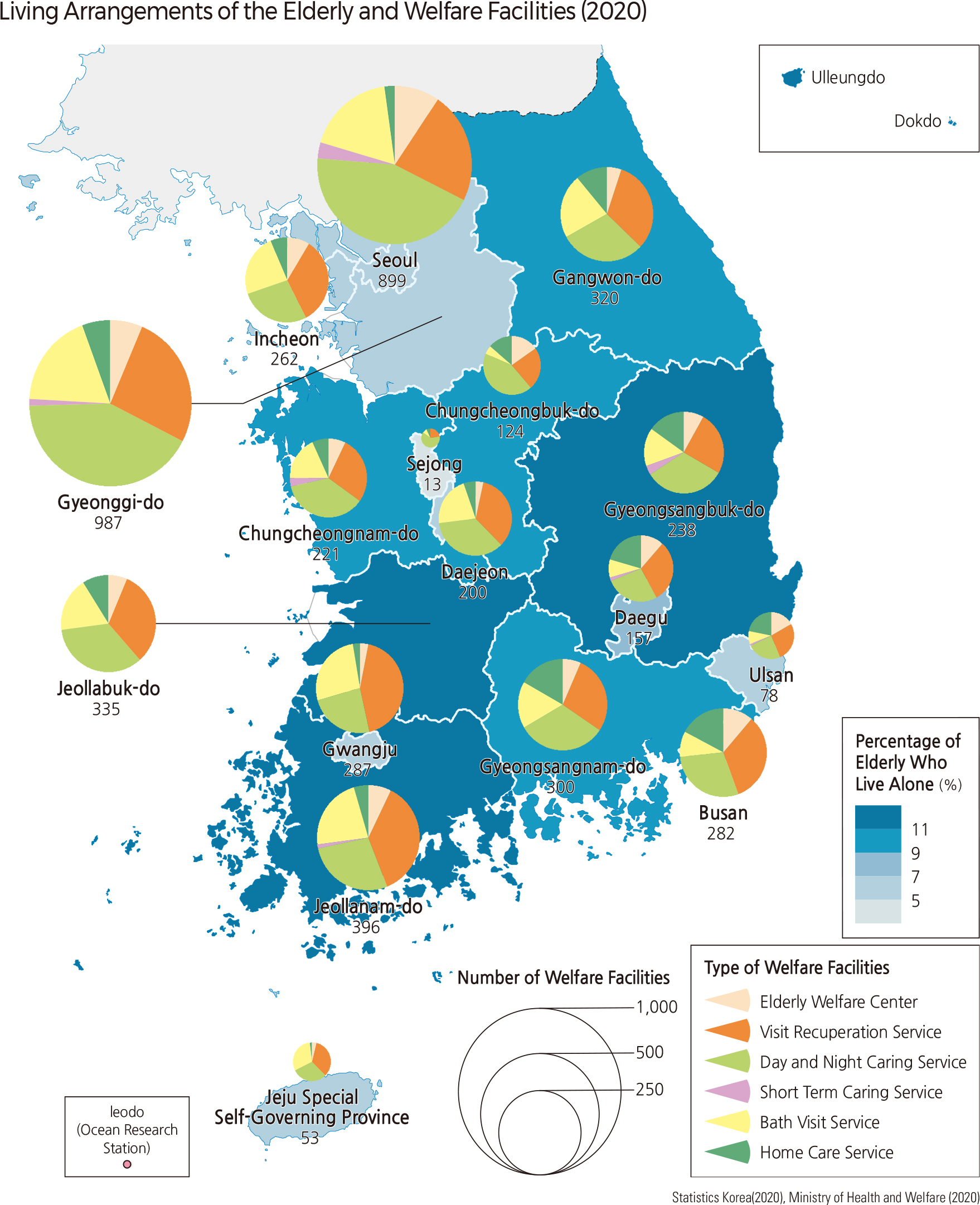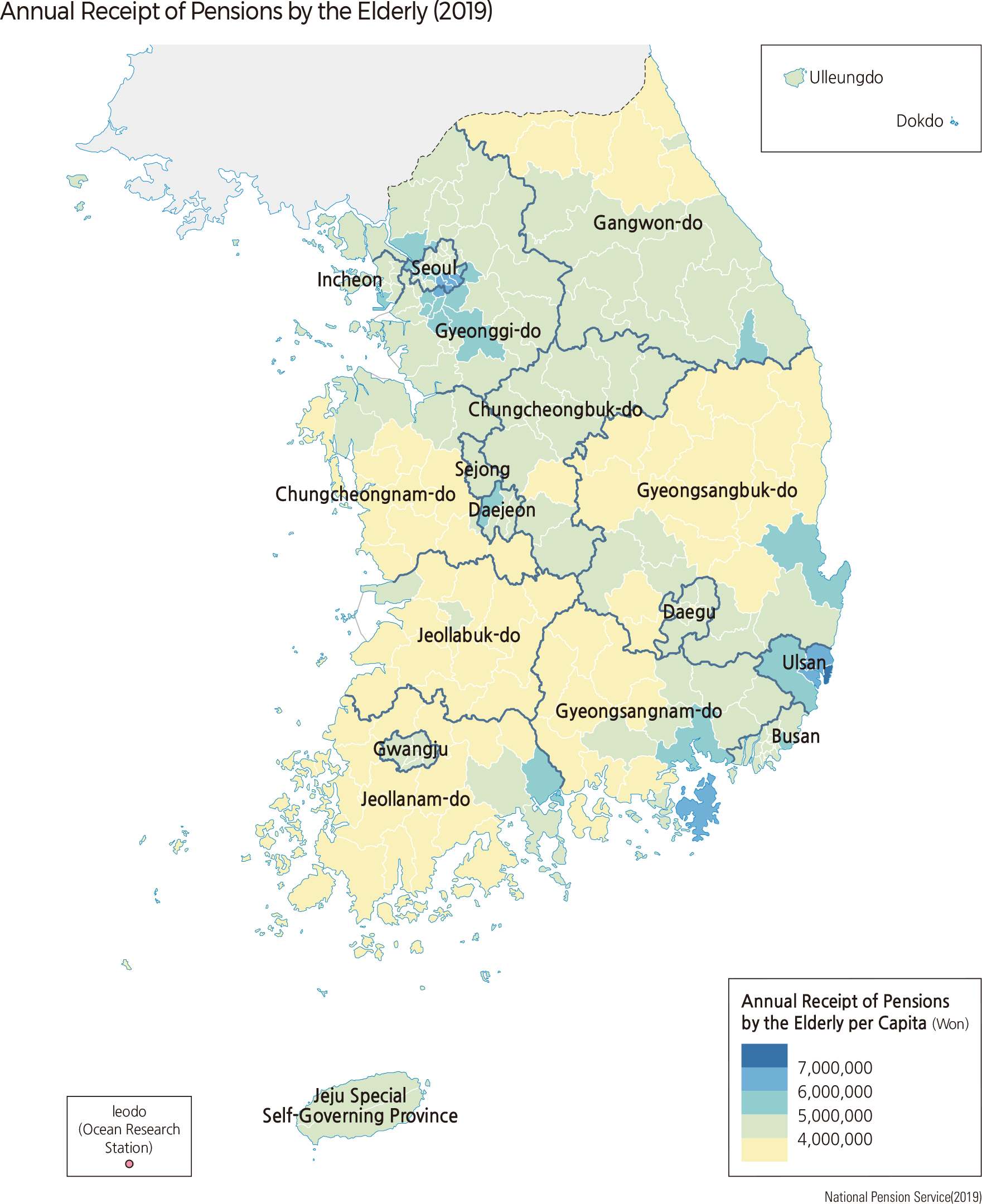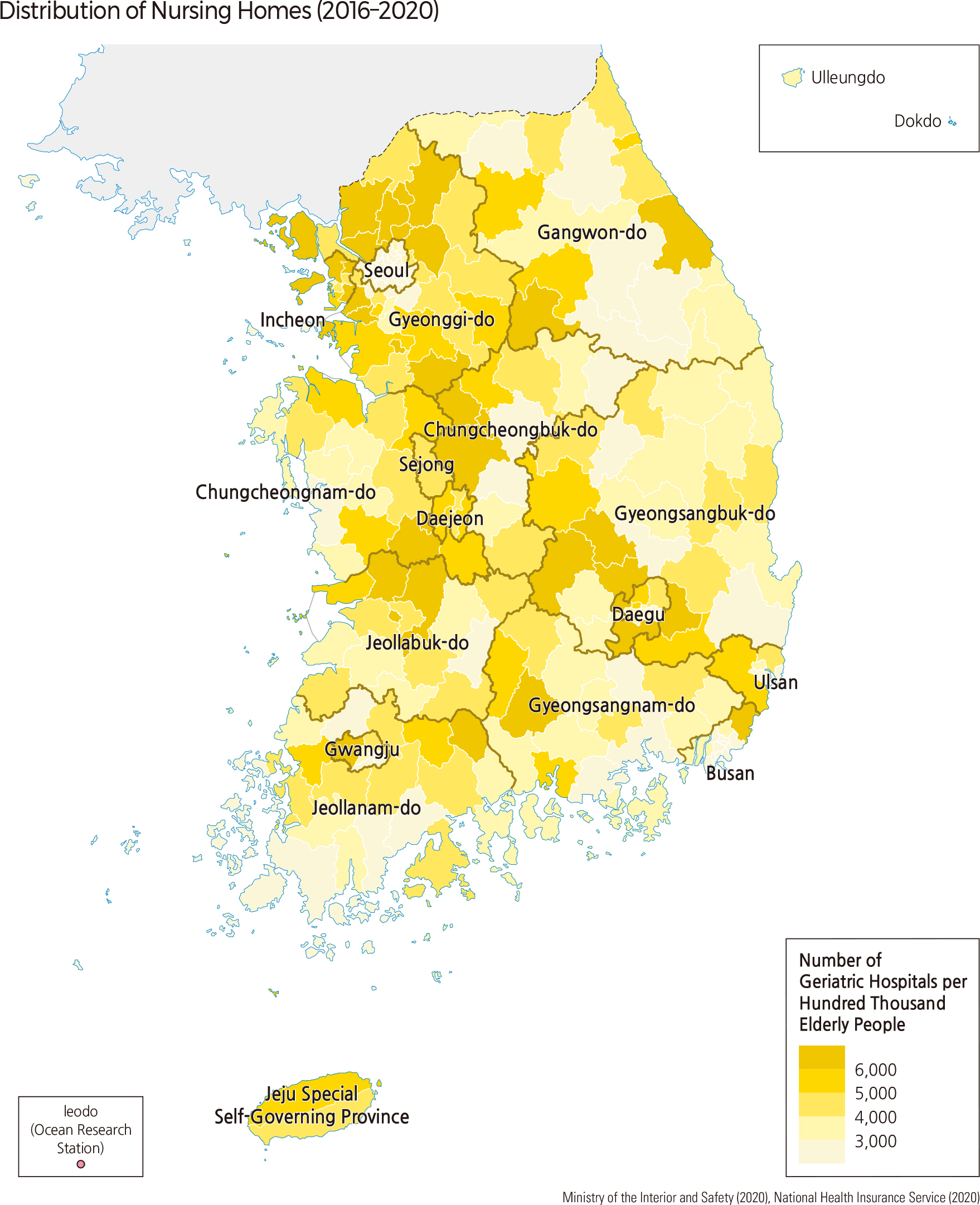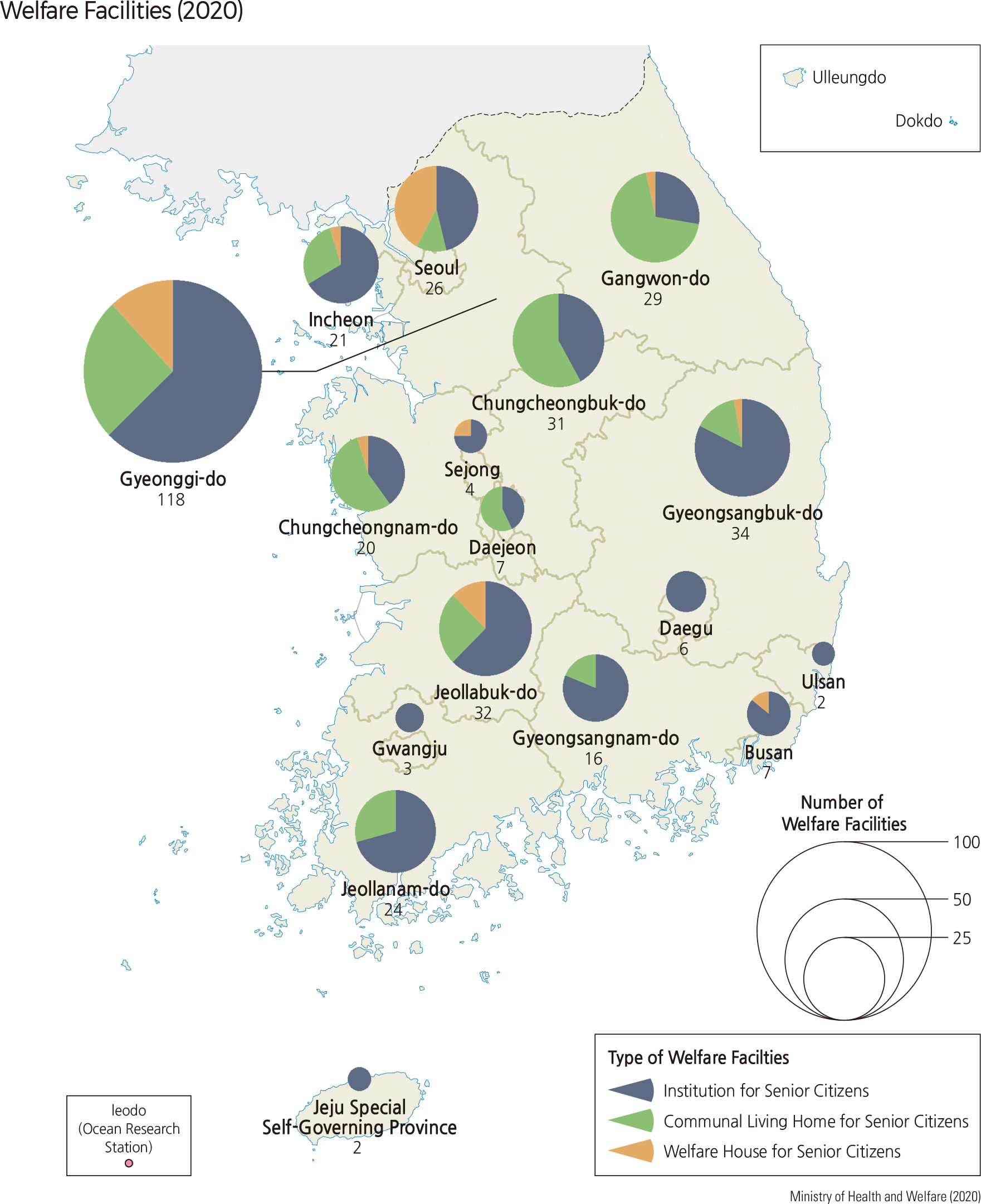English III 2021
Recently, welfare has emerged as the center of political debate in Korea. Various debates relating to welfare have arisen, such as the range of welfare services, the appropriate level of welfare, welfare-related government expenditure in terms of fiscal soundness, and the priority of welfare spending. Compared to existing political issues that the national resources had concentrated on the growth of the national economy, recent political issues have concentrated on the expansion of social welfare and the maintenance of the fiscal soundness following the expansion of social welfare. Recent welfare-related expenditure has consistently increased. The sum of social welfare expenditures in the statutory private sector, which is mandatorily spent from the private sector, and in the public sector, has substantially increased every year. The ratio of social welfare expenditure to GDP exceeded 10% in recent years. However, social welfare expenditure to GDP in Korea is still lower than that of other OECD countries. Considering the case of European states that spend at the 20 to 30% level of social expenditure to GDP, the social expenditure of Korea still does not reach the level of European welfare states. Although this difference should be considered in terms of the proportion of the elderly population and the difference in social welfare policy, the prospect that social welfare expenditure in Korea will continue to increase in the future is dominant. In accordance with the increase of social welfare spending, the related budget is also steadily increasing. Social welfare related-government expenditure is differentiated by the welfare objects, such as poverty, disabilities, women, children, and elderly, and by the sectors, such as residence and labor. Various social safety nets exist in Korea. Social insurance is represented by the four kinds of insurance accounts: national pension, health insurance (including long-term care insurance for the elderly), employment insurance, and industrial accident compensation insurance. These accounts provide for a stable life during old age, medical support, unemployment and reemployment support, and preparation of compensation for occupational accidents, respectively, as enrolled by many workers. The national pension and health insurance cover all citizens. Employment insurance and industrial accident compensation insurance cover all workplaces. In addition, workers are enrolled in social insurances and paid insurance premiums through their company. However, blind spots arise that do not benefit from the four major insurances. Unlike regular workers, for instance, a significant number of temporary or contract workers are not subscribed to employment insurance and industrial accident compensation insurance for affordability reasons. Therefore, improving the social insurance admission rate has become an important task for the social welfare sector in the wake of an increase in temporary workers. Welfare policies are also being implemented for those with low-income levels or difficulty in employment. Those whose income is less than the minimum cost of living are recognized as recipients of basic living, and livelihood benefits, medical benefits, housing benefits, and education benefits are supported. The amount of support depends on income and the degree of disability. Various systems such as the ‘mandatory employment of the disabled’ and ‘subsidy for the employment of the disabled’ are in operation to promote the employment of the disabled. Nevertheless, the employment rate for the disabled is 34.9%, which is only half of the total employment rate, so there is a need for a way to revitalize it.
The recent interest in childcare policy is growing because of a need to cope with the increasing number of dual-income households and the decreasing fertility rates. There are various types of child-care institutions, operated by national and public, corporate and private institutions provided by social welfare or religious foundations. In general, the demand for public child-care institutions is higher due to parents’ preferences. However, many child-care institutions are concentrated in urban areas; some rural residents lack childcare facilities. Social welfare for youth is focused on counseling and problem-solving, in accordance with the rapid physical and mental changes that are characteristic of the youth period. Youths received counseling at welfare facilities for various problems, mainly for their academic progress, career preparation, interpersonal relationships, mental health issues such as stress and delinquency, and computer and Internet consulting. In addition, throughout the country, there are various training and culture centers, campsites, and youth hostels for the physical and emotional growth of youth and the exchange and sharing of cultures. The aging of population experienced by many advanced countries has become a major social issue in Korean society. An increase in average life expectancy has led to an increase in the population of the elderly, and the proportion of elderly is increasing as Korea’s fertility rate has sharply decreased. In contrast, because the proportion of the working-age population is declining, Korean society with the world’s lowest fertility rate faces the difficult task of supporting an elderly population while maintaining a vibrant economy and society. Senior citizens in Korea are those 65 and older. There are more elderly women than elderly men in the generation who grew up in socioeconomic difficulties and confusion after the period of Japanese Annexation (1910 –1945) and the Korean War (1950 –1953). Therefore, implementing an efficient government welfare policy is important because many elderly face financial difficulties due to a lack of advanced preparation for old age. The recent increase in the aging population has led to an increase in geriatric facilities, residential welfare facilities for the elderly, and welfare facilities for the elderly nursing facilities. Residential welfare facilities for the elderly are mainly located in suburban areas with high accessibility from metropolitan cities. Welfare facilities for the elderly provide services such as home-visit nursing, home-visit bathing, day and night care, and short-term respite care. On the other hand, as the culture of volunteering and donation spreads throughout society, many volunteers play an important role in social welfare. They make up for the insufficiency where the system does not fully supply the social welfare services. |

